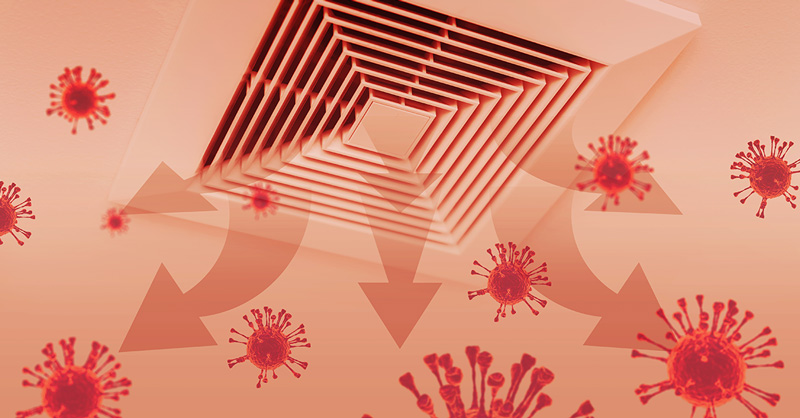Big news for healthier buildings in Canada: Health Canada has published Guidance for Indoor Air Quality Professionals, a practical, science-based resource for Indoor Air Quality (IAQ) experts, building operators, and employers. It outlines health effects for common contaminants and how to approach air sampling/monitoring, source control, ventilation, filtration, and evaluation. Published September 19, 2025, this is exactly the kind of applied guidance OSPE has been pushing for.
What Changed and Why It Matters
1) Clear recognition that COVID-19 can be airborne.
The “Diseases caused by bacteria, viruses, and fungi” section of the document explicitly notes that SARS-CoV-2 can spread via particles that remain suspended in the air and travel longer distances. The recommendations point to ventilation, filtration, and HEPA air cleaners as risk-reduction measures. This is in alignment with what engineers and public health experts have been saying for years.
2) CO₂ is tied to symptoms and can be used as a ventilation indicator.
Health Canada highlights epidemiological evidence that people exposed to CO₂ concentrations above ~800 ppm report more mucous-membrane and respiratory symptoms than those exposed to lower levels. The document also explains how CO₂ monitoring can indicate ventilation adequacy in occupied spaces and refers practitioners to the Residential IAQ Guideline for exposure limits. This supports OSPE’s position that sub-800 ppm is a prudent operational target for many settings.
3) A practical playbook for building operators.
The guidance reinforces three core strategies: source control, ventilation, and filtration, and recommends maintenance protocols, prompt moisture remediation, and education for staff and occupants. It’s written for IAQ professionals and it’s useful to owners/employers who need plain-language direction.
How This Aligns with OSPE’s Advocacy
OSPE’s Indoor Air Quality Working Group has long championed an engineering-centered approach to safer air. They’ve recommended treating airborne transmission seriously, setting measurable operational targets (including CO₂), and deploying layered controls (ventilation, filtration, and Ultraviolet Germicidal Irradiation) where appropriate.
Health Canada’s new guidance tracks closely with these recommendations and moves Canada toward skills-based, standards-aligned practice in the field.
What’s Next
- Adoption & training: Working with employers, facility managers, and public bodies to embed the guidance into policy, procurement, and maintenance programs.
- Measure & improve: Encourage routine CO₂/ventilation checks and simple dashboards to verify performance against target ranges and occupancy patterns.
- Layered defence: Continue promoting source control, ventilation upgrades, filtration, and (where warranted) HEPA air cleaners to reduce risk for respiratory pathogens and improve comfort/productivity.
This is a meaningful step forward, a real policy win for engineers and the public. Thank you to the OSPE IAQ Working Group and our partners for the persistence and technical leadership that helped get Canada here.






Comments (3)
I’ve been doing this since the requirement for ventilation of smoking rooms! ASHRAE 62.1 Ventilation for Indoor Quality has this covered.
I just wanted to say a quick thank you for all your advocacy on improving indoor air quality guidelines. I am a lawyer, public servant, and union exec pushing for the same things, and your success on this is really going to help!
Indoor air is arguably the fastest and most highly efficient means of pathogen spread in a given setting. SARS-CoV-2, Measles, Mumps, Chickenpox, Tuberculosis, & Norovirus are certainly recognized leaders.
Leave a Comment